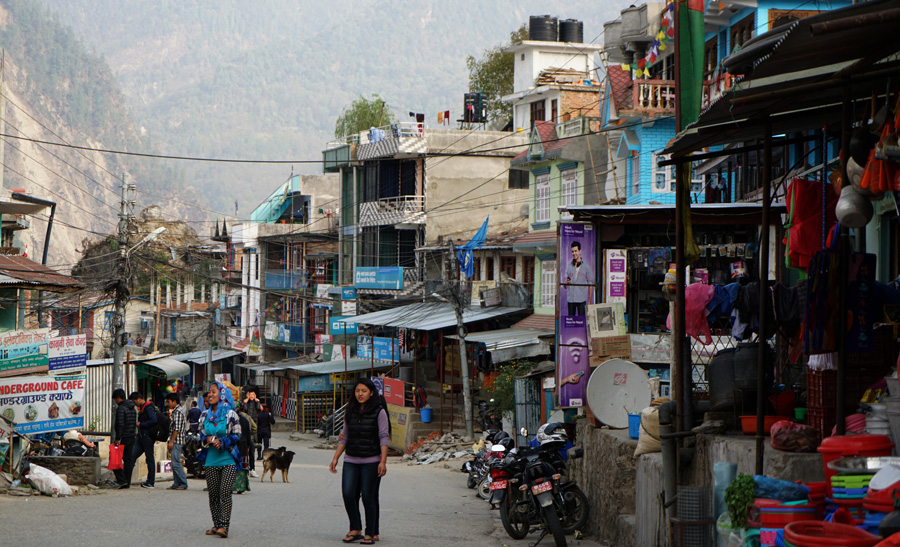







 |
|
Dhunche town, the administrative headquarters of Rasuwa district, Nepal. [Photo by Sylvia Chang/China Daily] |
About 15 km from Dhunche is the small town of Syaphrubesi. The road stretches to Rasuwagadhi, a border town in Nepal that neighbors Jilong.
This 17-km section of the road was built by the Chinese government in 2012 as part of a $20 million grant, and both countries plan to extend the road and build more facilities.
Wu Chuntai, the Chinese ambassador to Nepal, has taken steps to implement a maintenance project for the Syaphrubesi-Rasuwagadhi highway. The move came after Wu accompanied Nepal's Prime Minister Khadga Prasad Sharma Oli to China in March.
Kedar Prasad Paneru, head of the Rasuwa customs office, said a technical team from China has finished surveying the land around the Timure customs office in Rasuwa, where a "dry port" will be established for freight traffic and customs clearance services.
"The two parties are discussing land acquisition. Upon completion, the dry port will cover 4 hectares of land in the Langtang National Park," Paneru said.
On the Nepalese side, officials plan to build a customs house on the same scale as the one on the Chinese side, according to a senior Nepalese government official.
Not far from a makeshift customs house, stand the Chinese joint inspection buildings - one for immigration purposes and another for customs services.
In a reclaimed valley a few meters below the customs office, Indian trucks are parked in an area that can accommodate 200 vehicles. The trucks are loaded with noodles, cookies and herbs from Nepal, and electronics goods, aluminum products and ready-made garments from China.
Statistics provided by the Rasuwa customs office show that during the first nine months of the fiscal year, customs duties worth 1,050 million Nepalese rupees ($9.9 million) were collected at the crossing point. The sum is far higher than the full-year target of 390 million rupees.
Chief customs officer Paneru said a border facility that is currently under construction will ease clearance congestion at the customs point, and the Chinese government is determined to make the border point an international trade hub for South Asian countries.
Last year, the trade volume at the border with Jilong reached 612 million yuan ($95 million), and commodities transported from Jilong to Nepal rose seven times compared with 2014, according to statistics from the Chinese embassy in Nepal.
The Kerung border is booming, not just in terms of trade, but also tourism. Chinese tourists are now allowed to travel to Nepal through the checkpoint.
On a typical early morning in April, a number of Chinese cars arrived at the border's immigration center. Droves of Chinese tourists streamed out and squeezed into an upstairs office no larger than 10 square meters.
On average, about 60 Chinese tourists travel to Nepal through this border every day. By April 12, the immigration office had issued 4,829 visas on arrival for Chinese people.
A cross-border railway is scheduled to be built by 2020, running from the Tibetan city of Xigaze to the Nepalese border, as agreed by both countries during Oli's visit to Beijing in March.
By that time, the number of Chinese tourists visiting Nepal is expected to hit 300,000 a year - double the current number of 115,000, said Hari Prasad Bashyal, Nepal's former consul general to Lhasa.
Bashyal traced the origin of links between the two neighbors to the early 600s, when Bhrikuti, a princess of the Licchavi kingdom in Nepal, married Songtsan Gampo, Tibet's first emperor.
"This romance started a new chapter in history," said Bashyal, anticipating a thriving trans-Himalayan relationship in the future.
Santa Gaha Magar contributed to this story.